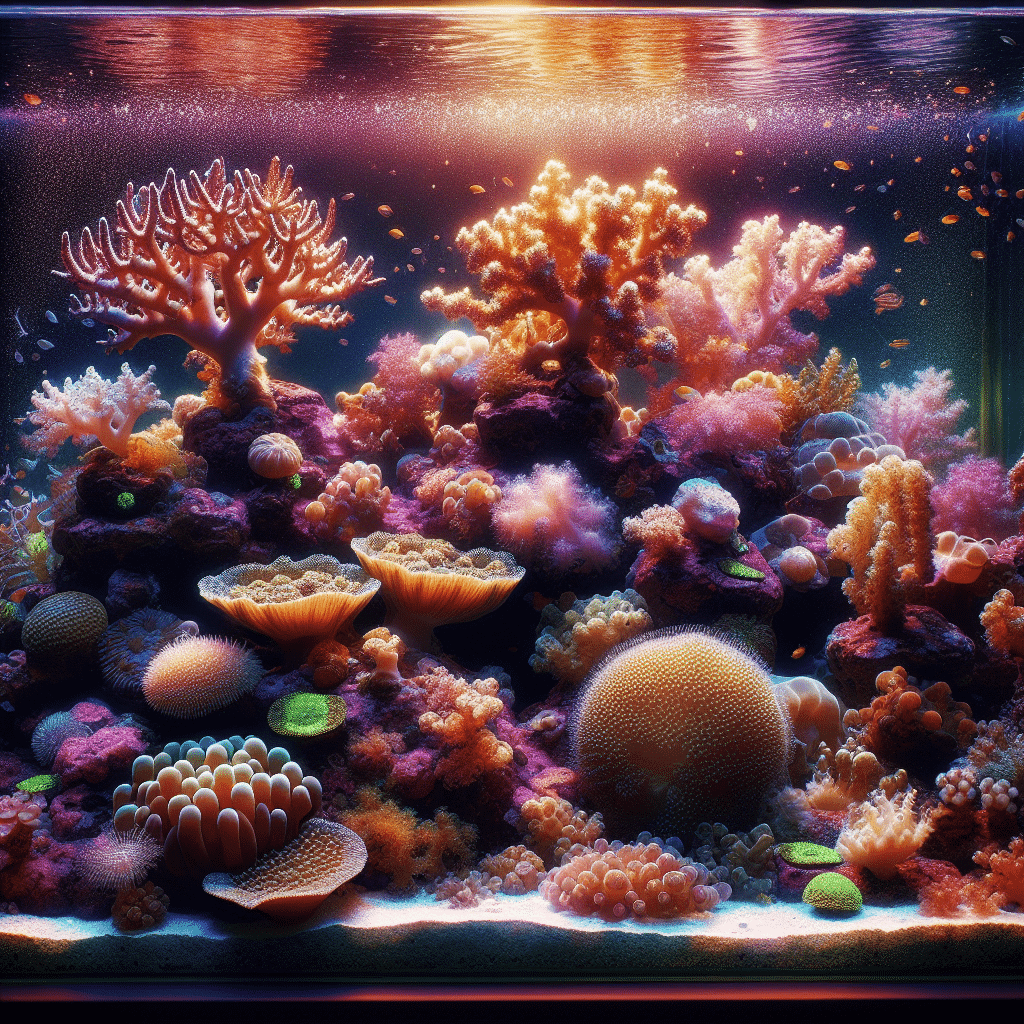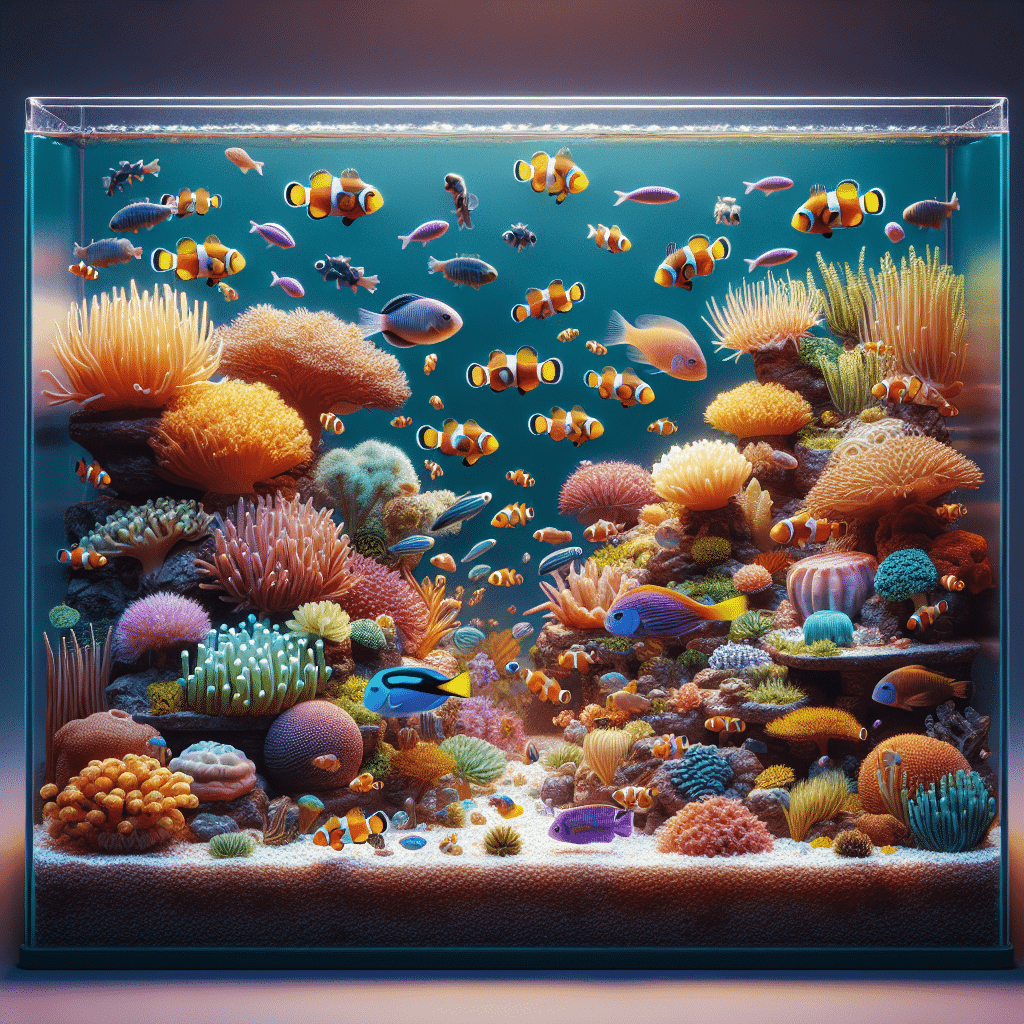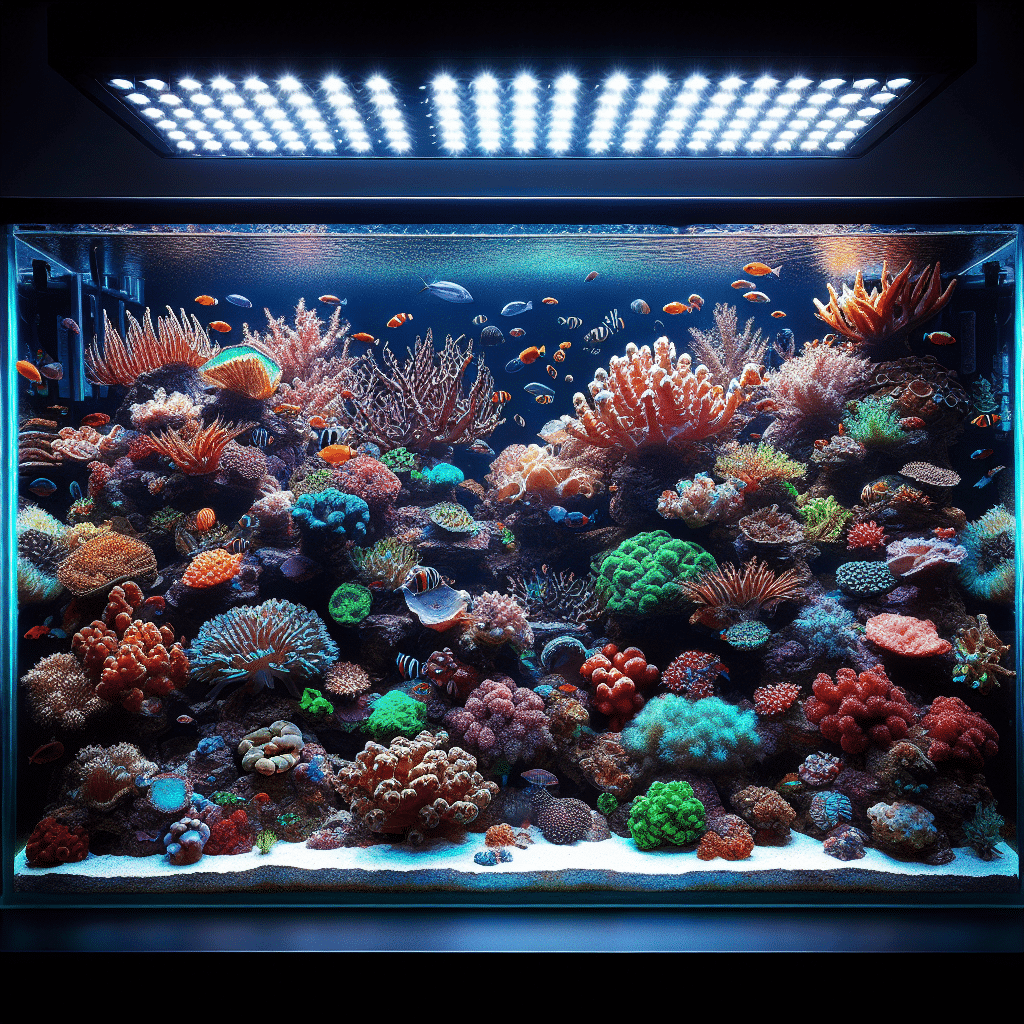Introduction to Nano Reef Tank Corals
Creating a vibrant nano reef tank involves careful attention to the selection of corals, which play a crucial role in the ecosystem. Understanding the importance and benefits of incorporating corals can enhance the overall success and visual appeal of the tank.
Importance of Corals in Nano Reef Tanks
Corals are essential inhabitants of nano reef tanks that contribute to the health and stability of the aquatic environment. They provide habitat and shelter for various marine species, fostering biodiversity. Corals also participate in the nitrogen cycle, helping to maintain water quality by absorbing nutrients and carbon dioxide.
| Role of Corals | Description |
|---|---|
| Habitat | Offer shelter for fish and invertebrates |
| Nutrient Cycling | Aid in maintaining water quality |
| Aesthetic Value | Enhance beauty with diverse shapes and colors |
Benefits of Incorporating Corals in Your Nano Reef Tank
Incorporating corals into a nano reef tank has numerous advantages. They not only improve the tank’s aesthetic appeal but also promote a balanced ecosystem. Healthy corals contribute to the overall stability of water parameters, which is vital for the well-being of other tank inhabitants.
| Benefits | Description |
|---|---|
| Biodiversity | Increase the variety of species in the tank |
| Water Quality | Help regulate nutrient levels and pH balance |
| Visual Interest | Add color and texture to the underwater landscape |
For those interested in setting up a nano reef tank, understanding the various aspects of coral care is vital. Exploring topics such as nano reef tank setup, nano reef tank lighting, and nano reef tank filtration can provide helpful guidance for creating a thriving aquatic environment.
Selecting the Right Corals
Choosing the appropriate corals for a nano reef tank is crucial for ensuring a thriving and visually appealing environment. There are several factors to consider and various types of corals that are well-suited for smaller aquatic settings.
Considerations for Nano Reef Tank Corals
When selecting corals for a nano reef tank, several factors must be taken into account:
- Tank Size: The limited space in a nano reef tank necessitates careful selection of coral species that can thrive in smaller environments.
- Water Parameters: Corals have varying requirements for water quality, including pH, salinity, and hardness. Monitoring these parameters is essential for coral health.
- Lighting Needs: Different corals require different intensities and spectrums of light. Understanding the lighting requirements is vital for coral growth. Refer to our article on nano reef tank lighting for more information.
- Compatibility: It is important to select corals that can coexist peacefully without aggressive interactions. Some corals may sting or compete for space.
- Growth Rate: Consider the growth rate of chosen corals, as some may outgrow their space quickly, requiring regular maintenance or relocation.
Types of Corals Suitable for Nano Reef Tanks
Several coral types are particularly well-suited for nano reef tanks. Here’s a table outlining some popular options along with their characteristics:
| Coral Type | Light Requirement | Growth Rate | Compatibility | Care Level |
|---|---|---|---|---|
| Zoanthids | Low to Moderate | Slow | High | Easy |
| Mushrooms | Low to Moderate | Slow | High | Easy |
| LPS Corals (e.g., Frogspawn) | Moderate | Moderate | Moderate | Medium |
| SPS Corals (e.g., Acropora) | High | Fast | Moderate | Hard |
| Soft Corals (e.g., Xenia) | Moderate | Moderate | High | Easy |
Choosing the right corals can significantly enhance the beauty of a nano reef tank. It is vital to ensure that each species selected aligns with the specific conditions of the tank. Proper understanding and management of coral requirements can lead to a vibrant and healthy reef environment. For additional information on setting up your nano reef tank, explore our article on nano reef tank setup.
Maintaining optimal conditions, including proper filtration and temperature, is crucial for the success of nano reef tank corals. For further details, see our articles on nano reef tank filtration and nano reef tank temperature.
Setting Up Your Nano Reef Tank for Corals
Creating an optimal environment for corals in a nano reef tank involves careful attention to tank parameters and water quality, as well as appropriate lighting and flow requirements. These factors play a critical role in the health and growth of corals.
Tank Parameters and Water Quality
Maintaining ideal tank parameters is essential for the well-being of nano reef tank corals. Key water quality parameters should be regularly monitored and adjusted as needed.
| Parameter | Ideal Range |
|---|---|
| Temperature | 75°F to 80°F (24°C to 27°C) |
| pH | 7.8 to 8.4 |
| Salinity | 1.023 to 1.025 |
| Ammonia | 0 ppm |
| Nitrite | 0 ppm |
| Nitrate | < 5 ppm |
| Calcium | 400 to 450 ppm |
| Alkalinity | 8 to 12 dKH |
| Phosphate | < 0.03 ppm |
Proper filtration is crucial for maintaining these water parameters. Regular water changes and the use of high-quality filtration systems can help achieve and sustain crystal-clear water. For more information on filtering your nano reef tank, check out our article on nano reef tank filtration.
Lighting and Flow Requirements for Coral Growth
Lighting is another vital aspect of setting up a nano reef tank. Different types of corals have varying lighting needs. Generally, corals thrive under strong light, which promotes photosynthesis and vibrant colors.
| Coral Type | Lighting Requirement |
|---|---|
| Soft Corals | Low to Moderate Light |
| LPS Corals | Moderate to Strong Light |
| SPS Corals | Strong Light |
LED lights are often recommended due to their energy efficiency and customizable spectrum. For guidance on selecting the right lighting, refer to our article on nano reef tank lighting.
In addition to lighting, water flow is equally important for coral health. Corals benefit from moderate to strong water movement, which aids in feeding and helps remove waste. The flow should be directed to mimic natural ocean currents, providing varying flow patterns throughout the tank.
| Flow Type | Description |
|---|---|
| Gentle Flow | Ideal for soft corals |
| Moderate Flow | Suitable for LPS corals |
| Strong Flow | Necessary for SPS corals |
By carefully calibrating these parameters, one can create a thriving environment for nano reef tank corals. For more tips on setting up your nano reef tank, explore our article on nano reef tank setup.
Caring for Nano Reef Tank Corals
Maintaining the health and beauty of corals in a nano reef tank requires careful attention to their feeding and overall wellness. This section outlines essential tips for effectively caring for nano reef tank corals.
Feeding and Nutrition for Corals
Corals derive nutrients from both light and food, making proper feeding crucial for their growth and vitality. Most corals are classified as either photosynthetic or non-photosynthetic, which influences their dietary needs.
| Coral Type | Primary Nutrition Source | Recommended Feeding Frequency |
|---|---|---|
| Photosynthetic Corals | Light and zooplankton | 1-2 times a week |
| Non-photosynthetic Corals | Meaty foods (e.g., mysis shrimp) | Daily or every other day |
Photosynthetic corals, such as soft corals and some stony corals, rely on light for energy, supplemented by zooplankton and dissolved organic matter. Non-photosynthetic corals do not require light and must be fed directly with high-protein foods. Ensuring a balanced diet will help promote healthy growth and vibrant colors in your corals.
Monitoring and Maintaining Coral Health
Regular monitoring of water parameters is essential for maintaining the health of nano reef tank corals. Key factors to keep an eye on include temperature, pH, salinity, and nutrient levels.
| Water Parameter | Ideal Range |
|---|---|
| Temperature | 75°F – 80°F (24°C – 27°C) |
| pH | 8.1 – 8.4 |
| Salinity | 1.023 – 1.025 specific gravity |
| Nitrate | < 5 ppm |
| Phosphate | < 0.03 ppm |
Corals thrive in stable environments. Sudden changes in water chemistry can lead to stress, coral bleaching, or disease. Regular water changes and careful monitoring of nano reef tank filtration will help maintain a healthy aquarium environment.
In addition to water quality, observing corals for signs of stress or disease is vital. Symptoms may include discoloration, a decline in extension, or the presence of pests. Addressing these issues promptly can prevent further complications. For more tips on overall upkeep, refer to our article on nano reef tank maintenance.
By providing appropriate nutrition and closely monitoring environmental conditions, one can ensure the thriving health of corals in a nano reef tank.
Enhancing Coral Beauty in Your Nano Reef Tank
Creating a visually stunning nano reef tank involves careful planning and execution. This section covers coral placement and aquascaping, as well as fragging and propagation techniques for coral expansion.
Coral Placement and Aquascaping
The arrangement of corals within a nano reef tank plays a significant role in both aesthetics and the health of the corals. Proper placement ensures that each coral receives adequate light and water flow, which are essential for growth and vitality.
When positioning corals, consider the following factors:
| Factor | Description |
|---|---|
| Light Requirements | Different corals have varying light needs. Place light-loving corals higher in the tank and shade-tolerant species lower. |
| Water Flow | Ensure corals are placed in areas with appropriate water movement. Some corals thrive in strong currents, while others prefer calm waters. |
| Space | Give each coral enough room to grow without competing for resources. Avoid overcrowding to reduce stress on the corals. |
Aquascaping is also crucial for an appealing design. Use rocks, shelves, and other structures to create levels and hiding spots for fish and other inhabitants. This not only enhances the beauty but also promotes a natural environment. For more guidance on setting up your tank, refer to our article on nano reef tank setup.
Fragging and Propagation Techniques for Coral Expansion
Fragging is the process of cutting corals to promote growth and expansion. This technique allows aquarists to increase their coral population while maintaining the health of the mother coral. Here are some common methods for fragging:
| Method | Description |
|---|---|
| Cutting | Use a sharp tool to slice through the coral, ensuring a clean cut. Place the frag in a suitable location for recovery. |
| Breaking | For certain types of corals, gently breaking off a piece can create a frag. Ensure that the broken edge is clean. |
| Mounting | After fragging, place the new coral pieces on a frag plug or rock to secure them in place for growth. |
Propagation can also occur naturally through processes such as budding or splitting. Regular monitoring of coral health will be necessary during these processes to ensure success. For tips on maintaining the health of your corals, check out our article on nano reef tank maintenance.
By focusing on coral placement and utilizing fragging techniques, aquarists can enhance the beauty of their nano reef tank corals while fostering a thriving underwater ecosystem.
Troubleshooting Common Coral Issues
Maintaining the health of corals in a nano reef tank can present various challenges. Understanding and addressing these common issues is crucial for keeping a thriving aquatic environment. This section focuses on two significant challenges: coral bleaching and pests or diseases affecting reef tank corals.
Dealing with Coral Bleaching
Coral bleaching occurs when corals expel the symbiotic algae (zooxanthellae) living in their tissues, resulting in a loss of color and essential nutrients. This phenomenon can be triggered by several factors, including changes in water temperature, light intensity, and water quality.
Causes of Coral Bleaching
| Cause | Description |
|---|---|
| Temperature Fluctuations | Sudden increases or decreases in water temperature. |
| Poor Water Quality | High levels of nitrates, phosphates, or toxins. |
| Intense Lighting | Excessive light exposure can stress corals. |
| Low Nutrient Availability | Insufficient nutrients to support coral health. |
To combat coral bleaching, it is vital to monitor and maintain stable tank conditions. Regularly check parameters such as temperature, salinity, and pH. Adjust lighting levels if necessary and ensure that water quality remains optimal. For more tips on setting up your tank, refer to our article on nano reef tank setup.
Addressing Pests and Diseases in Reef Tank Corals
Pests and diseases can pose a significant threat to coral health. Common pests include flatworms, nudibranchs, and certain types of snails, while diseases may manifest as tissue necrosis or other alarming symptoms.
Common Coral Pests and Their Effects
| Pest | Symptoms |
|---|---|
| AEFW (Acro Eating Flatworms) | Tissue loss, visible flatworms on corals. |
| Zoanthid Eating Nudibranchs | Missing or damaged zoanthid polyps. |
| Coral-eating Snails | Holes or patches in coral structures. |
To manage pests and diseases effectively, it is essential to regularly inspect corals for signs of infestation or illness. Quarantine new additions to the tank to prevent the introduction of pests. If pests are detected, manual removal or treatment with appropriate methods may be necessary. For additional information on maintaining reef tank health, explore our article on nano reef tank maintenance.
By staying vigilant and addressing issues promptly, hobbyists can foster a healthy and vibrant environment for their nano reef tank corals.



